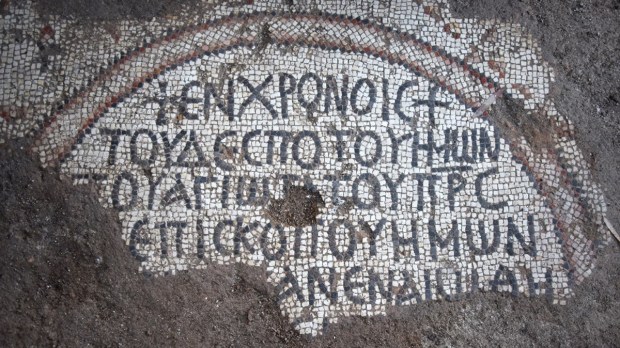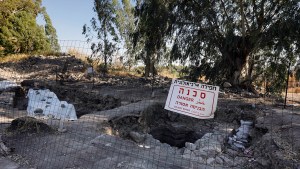A team of researchers working at what is believed to be the Church of the Apostles, near the Sea of Galilee in what was the biblical town of Bethsaida, have stumbled upon another mystery. Now the team is looking for answer to explain why the church has no doorway.
Haaretz reports that the team is certain that the site is the long lost Church of the Apostles. It was identified by several factors, such as vivid floor mosaics and an east-west orientation that was typical of Byzantine churches. It was also referenced in the chronicles of a 8th-century bishop who traveled through the area on pilgrimage.
The site is not yet categorically proven to be the Church of the Apostles, but it is the only suitable structure to fit the bill and it is in the appropriate region. What proof they did find is based on mosaic inscriptions, which referred to a prelate who renovated the structure. That it was renovated at all suggests that it was an important site that the clergy revered.
Bethsaida
The researchers determined the location of Bethsaida based on 8th-century writings from the chronicles of a Bavarian bishop named Willibald. The Jerusalem Post notes that Willibald was in the area on a pilgrimage around 724, and took scrupulous notes of his travels.
Willibald’s route followed that of Jesus and his apostles in the Gospels. His writing referred to a passage in Luke, when Jesus withdrew with the apostles to Bethsaida. It further suggests that the Church of the Apostles was built upon the site so closely associated with Jesus and the apostles. Willibald wrote:
“And thence they went to Bethsaida, the residence of Peter and Andrew, where there is now a church on the site of their house,” the bishop wrote as he was traveling along the shores of the Kinneret. “They remained there that night, and the next morning went to Chorazin, where our Lord healed the demoniacs, and sent the devil into a herd of swine.”
This record confirms that the Church of the Apostles still stood in the 8th century. A massive earthquake struck the region a few decades after Willibald’s visit. It is believed that the quake destroyed many early Christian sites, and once they were gone the memory of their locations faded over time.
Excavation
The excavations of the site believed to be Bethsaida, called Al-Araj, began in earnest in 2016. Since then teams have discovered Roman-era buildings, coins, pottery, and similar artifacts. Even in those early stages, the presence of fragmented mosaics led them to believe the church was in the vicinity.
No door
While the team is confident in their findings, there is a mystery surrounding the archaeological investigation. The church structure was discovered with its walls intact, but there is no sign of a door.According to the Times of Israel, the researchers have not been able to settle on a conclusive reason as to why the church would have no portal.
As of now, there are two working theories as to why this may have been. The first suggests that the church was retired and closed off for preservation. Even after the structure was desanctified, it is possible that the door was walled off in order to keep out vandals or those seeking to defile the former church.
The other theory, however, is less reverent. It is possible that the site was used as a sugar factory in the Middle Ages. In this case, the church would have been filled in with dirt to make a sturdy foundation for the factory. This theory arose because archaeologists discovered many broken vessels used for sugar production during the excavation.
The team is continuing to study artifacts that were excavated during the 2021 season. In 2022, they will return to the site to attempt to unravel more of this mysterious history. The ongoing excavation will proceed with the goal of answering why there is no door to this historic early Christian church.


